On the one hand, with his research on the propulsion systems of space rockets, he made a fundamental contribution to the space race; on the other hand, thanks to his esoteric knowledge and the meeting with Aleister Crowley, he devoted himself to occult practices such as the infamous "Operation Babalon": we present Jack Parsons, the "mad scientist" who used to sing the "Hymn to Pan "Just before his missile tests.
di Francesco Cerofolini
In the late afternoon of June 17, 1952, a roar shook the city of Pasadena. A violent explosion devastated an old warehouse converted into a chemical laboratory at 1071 South Orange Grove. The rescuers are faced with a devastation worthy of a theater of war. The mutilated and disfigured body of a man, tuttavia still conscious, he lies on the floor of the building. That man is John Whiteside Parsons. The man is rushed to the hospital but his death occurs shortly after.
Parsons was a well-known personality in Pasadena. The day-after Los Angeles Times headlines: "Missile scientist killed in Pasadena blast". Although he was not a real scientist, Parsons had in fact worked on rockets during the Second World War. He and his team of experts had come up with innovations that proved decisive for victory in the conflict, innovations that in a few years would have laid the foundations for the conquest of space. Parsons' death would have been remembered as a serious and untimely loss to the aerospace industry were it not for the fact that in the following days the newspapers appeared in the newspapers that painted a disturbing and unexpected portrait of the young scientist.
The newspapers began to publish rumors and gossip that had been circulating for years about Parsons, about his libertine lifestyle but above all about the his interest in "black magic" and his links with the Church of Thelema e with its founder, Aleister Crowley. La Parsons' death soon became material for tabloids and that was enough for puritanical and paranoid America of the time to reduce his contribution to rocket science to a footnote. This damnatio memeoriae it can be explained in part by Parsons' heterodox interests that he really made magic one of his fields of research. It still seems inconceivable to many that the paths of the science of space flight and ceremonial magic have crossed in his person.
By revisiting his exceptional biographical story, one can realize how not only for Parsons these two interests were not in conflict but were even complementary. Parsons was only the latest in a long line of men of science for whom both magic and science involved both studying the secret laws that govern our universe and bending these same laws to one's will. Parsons took this insight to the extreme by searching with both the science and the magic of to impart a new direction to the history of humanity.

Childhood and youth
Marvel Witheside Parsons was born on October 2, 1914, but no one will ever call him by his first name. His parents had divorced when he was still in the womb and his mother will refuse to call him by the name inherited from his father. His mother Ruth Parsons will raise him along with his wealthy grandparents. Little Jack, as he will soon be called by everyone, is a curious child who soon develops an inordinate passion for reading. It isn't too long before Jack stumbles upon the novels of Jules Verne and be struck by From the Earth to the Moon. From there to science fiction pulp magazines such as Amazing Stories the step is short and it is in those stories and in those colorful covers that Jack discovers the rockets.
The rocket was the favorite medium of science fiction writers of the time to take their characters into space. Scientists, however, were of another opinion and considered it impossible to use these devices, too unstable and unpredictable, for space travel. The same word rocket aroused hilarity and ridicule so much that the few scientists who studied its potential applications, such as the pioneer Robert Godard, they were careful to use this term in their works. This did not discourage Parsons who, with his grandfather's help, began building miniature rockets using kits advertised in pulp magazines. During his school years, Jack develops a lonely disposition and an intolerance for any kind of authority. Once an adult he will write remembering those years:
"Your isolation as a child gave you the necessary background in literary erudition and education; negative experiences in relationships with other children gave you the necessary contempt for people and collective mores. "
The only peer that Jack ties up with is Edward "Ed" Forman who will remain his friend for life. The two begin to build rockets and test them, fantasizing in the meantime to reach the moon sooner or later. Parsons and Forman weren't the only ones dreaming of reaching the stars aboard a rocket. In those same years, between the end of the XNUMXs and the XNUMXs, amateur groups and organizations dedicated to the study of rockets appeared all over the world. Based on the pioneering works of the aforementioned Goddard, the Russian Konstantin Tsiolkovsky and the Romanian Herman Oberth, these groups conducted their own experiments and exchanged information among themselves even from one country to another. In these years Parsons and Forman joined the American Interplanetary Society (AIS), a group that mainly brought together science fiction enthusiasts rather than actual scientists. Parsons and Forman took care of keeping up a close correspondence with a then very young Wernher Von Braun.
The safe and comfortable bubble in which Jack Parsons spent childhood and adolescence was shattered by economic crisis of 1929. The family's standard of living dropped dramatically and the barely XNUMX-year-old Jack had to find a job. Even this experience will be so formative that he will write about it: "The loss of family assets developed the your sense of self-sufficiency in a critical moment: contact with reality was essential at that time ”. Parsons got a job at the Hercules Powder Company of Los Angeles, an explosives manufacturing company where he acquired an encyclopedic knowledge of the subject. He also enrolled in Pasadena Junior College with a chemistry course but had to leave after only one semester.
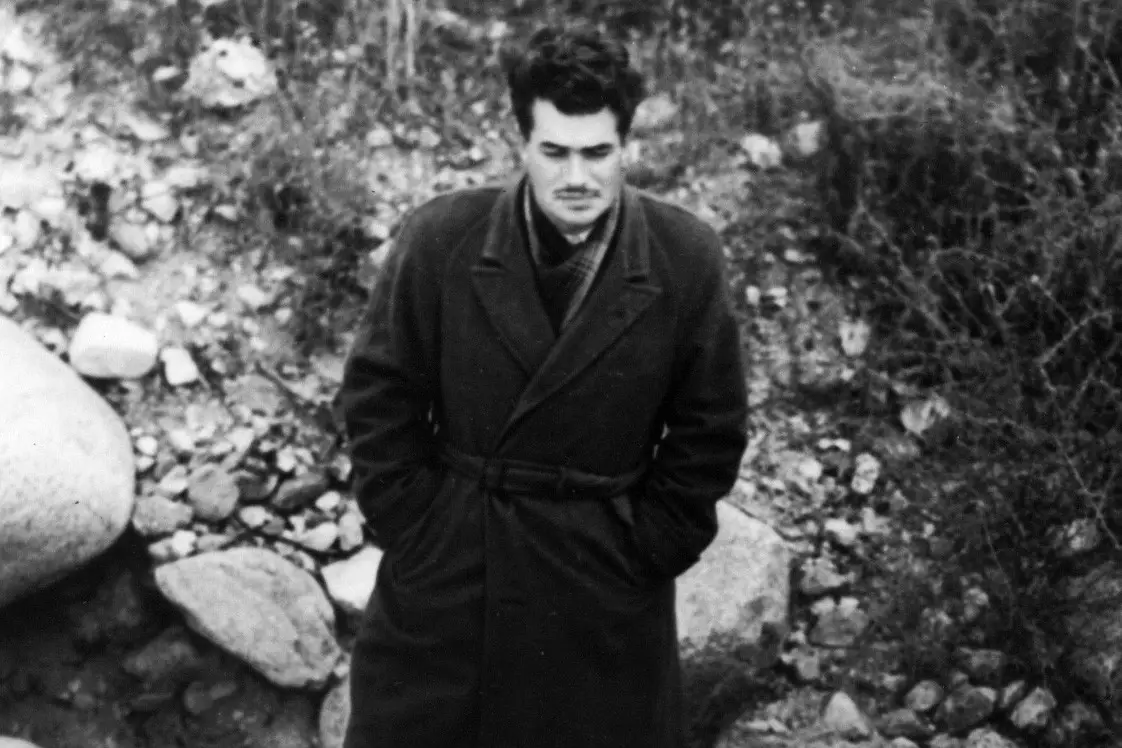
The years of the "Suicide Squad"
1935 was a pivotal year in Jack's life. On April 26, he married his first wife Helen Northrup. Around the same time, he and Forman they knew Frank Malina, a California Institute of Technology (Caltech for short) student who shared their passion for rockets and space travel. Although Parsons and Forman did not have academic degrees, Malina quickly realized that their enthusiasm and their practical knowledge were what he needed to carry out the experiments she had in mind.
Malina proposed to the two to start a project for the building a rocket engine functioning for which they could have had access to the state-of-the-art equipment of the Guggenheim Aeronautical Laboratory at the California Institute of Technology (GALCIT), where Malina worked. In the project Frank Malina was in charge of the mathematics, Jack Parsons of the chemistry and Ed Forman of the mechanics. The three formed the core of what became known on campus as the in the years to come Suicide Squad, due to the dangerous experiments they conducted and the frequent fires and explosions that accompanied them.
Soon the group gained the support of the physicist Theodore Von Karman, a Caltech lecturer who allowed this informal group, now known as GALCIT Rocket Research Group, to work within the university and to draw on its resources. Over the next two years, the ranks of the Suicide Squad swelled and finally the first concrete results arrived. To protect the safety of the Caltech students, the test site was moved to Arroyo Seco, a desert area close to the Devil's Gate dam.
On Halloween 1936, the team began a series of tests on the rocket engine that lasted until the following November 15th. After several attempts and failures the engine finally ran as expected. A photo taken that October 31 has become iconic. Shows Ed Forman and Jack Parsons tinkering with the little rocket, preparing it for testing. The photo is known as "The Nativity", because it is thanks to the almost amateur work of those young people that years later NASA's Jet Propulsion Laboratory will be built there in Arroyo Seco.
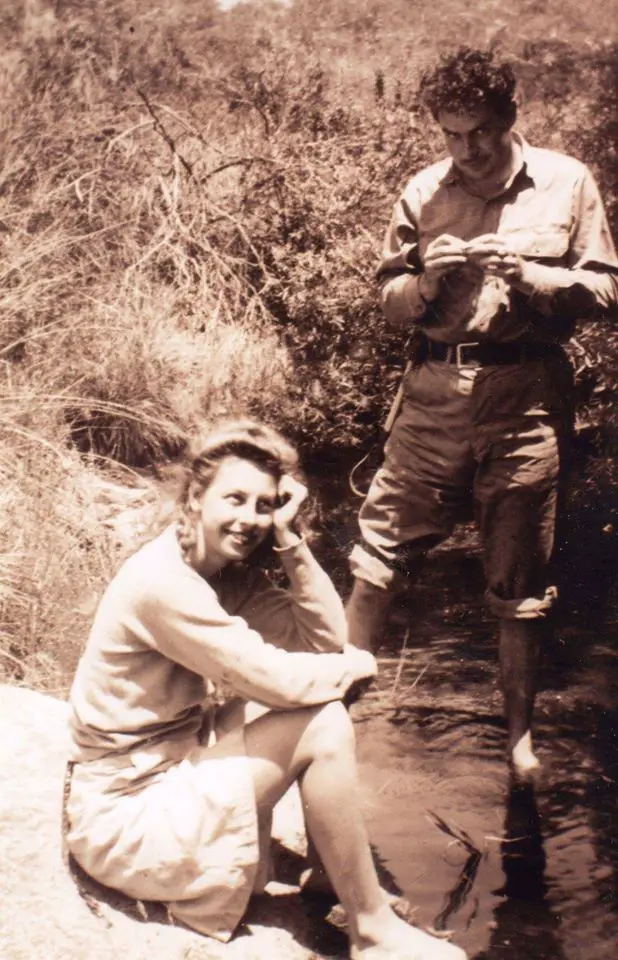
(Fanta) science and magic
Since childhood Jack Parsons had manifested an inexhaustible intellectual curiosity, a characteristic that distinguished him even in adulthood. His interests were not limited to rocket science alone. Around 1938 Parsons began to take an interest in the writings of Karl Marx and to the socialist cause and began to gravitate towards a study group that brought together many Caltech students including Frank Malina. Parsons later joined the American Civil Liberties Union, an organization that was viewed with suspicion at the time.
At the same time, Parsons used to attend the Los Angeles detachment of the Science Fiction League (LASFL), the largest association of science fiction enthusiasts of the time, which was happy to host a true rocket scientist. A very young Ray Bradbury years later he recalled Parsons' visits thus: "A young man, six or seven years older than me, was there, talking to us about the Rockets and the Future ".
In those years Parsons was able to meet many great names in fantasy such as AE Van Vogt e Robert Heinlein. Parsons was a sort of celebrity in the microcosm of science fiction fans so much so that a few years later, in 1942, the writer William AH White modeled on him one of the protagonists of his novel Rocket to the Morgue. White's description of Parsons is symptomatic of how he was perceived in that environment at the time:
"An eccentric scientist. In working hours at the California Institute of Technology he was an uninspired lab technician, but in his spare time he devoted himself to those fringe aspects of science that the most purist scientists regarded as quackery […] Pendray's rockets, Dunne's temporal dreams, Rhine's extra-sensory perceptions, Gould's sea snakes - all these captured his interest more than any research conducted at the Institute. It was inevitable that he was a member of the Fortean American Society and that he had his own archive of incredible events to publish as a supplement to Fort's works. "
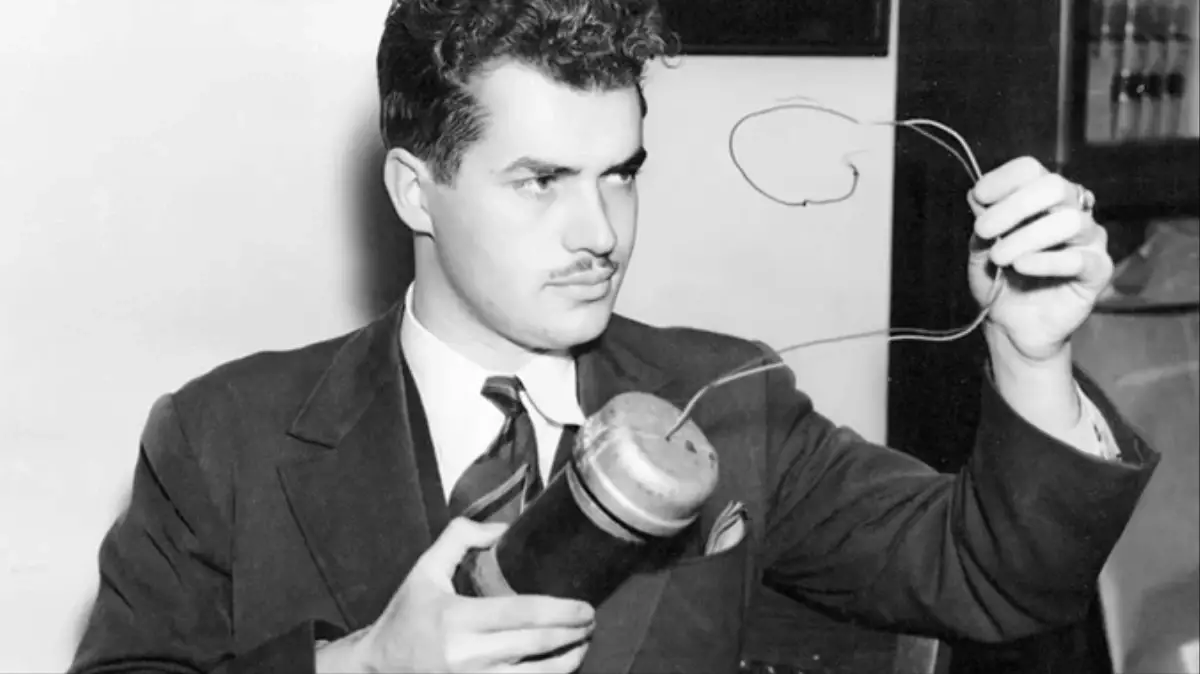
White describes a Parsons torn between his conventional research and what we could define as "heretical". Surely this fragment makes us understand that in 1942 Parsons' involvement in the study of magic was by now known and that the person concerned made no secret of it. Parsons' encounter with magic and specifically with Magick by Aleister Crowley occurred in 1939 and was one of the most important events of his life.
Jack Parsons and his wife Helen were introduced to the Agape Loggia of the Ordo Templis Orientis (OTO) of Los Angeles by some friends in January 1939. The OTO is an initiatory order founded by Carl Kellner and Theodor Reuss at the end of the nineteenth century, who traced its origins to none other than the infamous Illuminati of Bavaria. In 1912 Aleister Crowley took the reins of the order and subjected it to an extensive reorganization work in order to make it the main means of disseminating his doctrines.
Between 1915 and 1916 Crowley undertook a trip to America and during the visit to the Vancouver office of the OTO he met Wilfred T. Smith, who asked for permission to found a lodge in Los Angeles. In 1934 Wilfred Smith founded the Agape lodge at 1746 North Winona Boulevard and made every effort to advertise it as much as possible. At first, Jack Parsons felt, by his own admission, a mixture of attraction and repulsion for the figure of Smith, but in time it will become for Parsons a point of reference and a substitute for the father figure of which his childhood had been deprived.
When he came into contact with the OTO, Parsons was not totally unfamiliar with the subject of magic. Tell the friend Robert Rypinski that Parsons' interest in Crowley and his work sparked when Parsons visited his home discovered Crowley's book in his library Konx Om Pax. The discovery must have been a real epiphany for Parsons if Rypisnki describes it this way: "I don't know what that book meant but for Jack it was like water for a thirsty person ”. It was also what attracted Parsons the bohemian atmosphere and libertine that was breathed in the group. Around the lodge gravitated homosexuals in search of a "safe space", penniless artists and others unwanted by the "respectable" society. The most active members of the lodge had their own homes within it, making it resemble a sort of commune.
Over the next few months Jack and Helen immersed themselves in the study of the occult sciences with great enthusiasm, and this was also noticed by Jack's colleagues, who certainly did not hide his new interests. Frank Malina was puzzled by a man of science who experimented with magic and years later he will describe the rift that Jack crossed:
"He was not schizophrenic but had two subjects that he loved very much, one was rocket science, where the dream was tangible […]. Then he had another compartment in his mind that he was fascinated by magic. "
For Parsons, however, there was no incompatibility between the two fields, on the contrary, he soon began to see his scientific path as preparatory to the magical one:
"The nascent awakening for chemistry and science acted as a counterweight to the subsequent magical awakening. "
In correspondence with other members of the OTO Parsons talks about how fascinated he is by the hidden dimensions Crowley talks about in his writings and how his magical system has similarities with the field of quantum physics.. On February 15, 1941, Jack and Helen were officially initiated into the Agape lodge of the OTO. For Parsons it became a real family:
“I was a lonely child and it's good to have such a great and big family. I've never met my father and it's nice to have one now. "
Meanwhile news about Parsons began to reach Crowley himself, who despite his precarious health conditions did not stop managing his organization. Wilfred Smith writes to him:
"I think we have an excellent man, Jack Parsons. He has a sublime mind and a better intellect than mine… JP will prove to be very valuable. "

World War II
In the years leading up to the Second World War, the attitude towards rockets and missiles began to change. By exploiting the fact that the Treaty of Versailles did not explicitly prohibit rockets, the Nazi regime in Germany had enlisted most of the members of amateur missile groups to put them to work on possible war applications. It is from this program that they will arise the fearsome V2 rockets.
In America, the military's interest in rockets manifested itself in 1939 when the Air Corps General Henry Arnold he turned to his scientist friend Theodore Karman to solve a crucial problem for military aviation: military aircraft needed something that would make take-off faster so that they could use shorter runways. Had this problem been solved, planes could have taken off from makeshift runways built in war zones or from aircraft carrier decks. Karman decided that the Suicide Squad research could be the key to solving this problem and so he was able to make sure funding from the National Academy of Sciences to produce what will be known as Jet-Assisted-Take-Off. Karman decided to use the term jet rather than rocket to avoid ridicule.
Caltech leased six acres of land in Arroyo Seco, where some Spartan buildings were erected to serve as the project's headquarters. Parsons worked as usual on the chemical part, trying in a series of attempts to find a fuel whose composition made it burn at the right speed. With the first results the project expanded, the group swelled its ranks and the informal atmosphere it had characterized from the beginning the group gradually gave way to a more hierarchical and professional environment. In this new organization Parsons was appointed head of the solid fuel research section and was tasked with preparing the JATOs for testing.
With the United States entering the war in 1941, it became even more urgent to develop this new technology. The members of the research team were exonerated from conscription and their efforts culminated in the test which took place on April 15, 1942. at the Muroc Auxiliary Air Field in Mojave desert. That day a Douglas A-20A twin-engine bomber took off thanks to the JATOs created by Jack Parsons' team. With that test the rockets ceased to be material for science fiction magazines and entered the domain of science and technology by right. This invention also opened unthinkable economic prospects for penniless students, so Parsons, his friends Forman and Malina and their mentor pooled their savings to found the company. Aerojet Engineering Corporation, which would produce and market the JATOs.
The first Aerojet product was to be a solid fuel JATO which would be more manageable and safer than the liquid fuel ones used in the tests. However, solid fuel itself presented several problems, in fact it was very susceptible to temperature changes and cracks were created due to thermal expansion that prevented it from functioning properly. Parsons fumbled over this problem for some time until with ingenious intuition he found the solution.
There are several stories circulating about how Parsons came up with this revolutionary idea, the most widespread tells of how Jack drew on his classic readings and how he was inspired by the accounts of the "Greek Fire", a kind of bitumen flammable used by the ancient Greeks as a weapon. Hence the idea of using asphalt in the fuel to keep it unchanged in its original form. Perhaps Parsons at that time could not have imagined it but the application of this technique in the following years will make it possible to send rockets out of Earth's orbit. With this intuition, which came almost by chance, Parsons made a fundamental contribution to the space race.
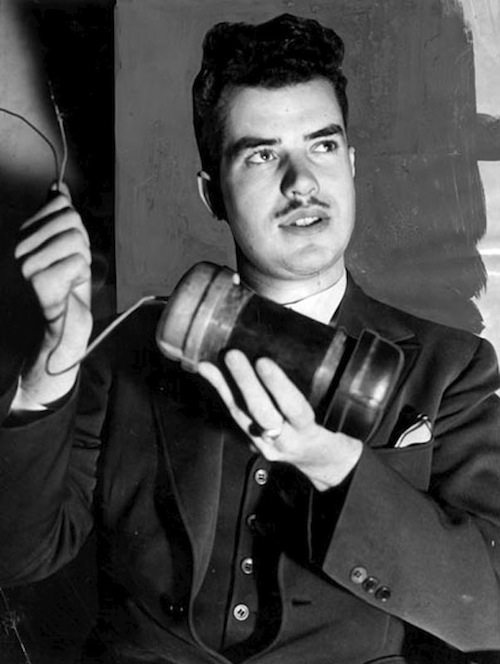
The Parsonage
Over the time the secret life of Jack Parsons, that of Crowley's magician and adept, began to take over the worldly one of the brilliant scientist. The Agape lodge changed its domicile, choosing an old estate that belonged to the timber magnate Arthur Fleming, located in the same area of Pasadena where Parsons had spent his childhood. In this new house the members of the order lived with their families according to the law of Thelema. In this almost utopian context, jealousy was considered a weakness to be overcome, so Parsons began a relationship with Betty, Helen's half-sister and the latter became the companion of Jack's mentor, Wilfred Smith.
Thanks to the intense proselytizing activity carried out by Parsons himself, at the end of 1942 the lodge had no less than forty members. The house, where the Order also held several public events became jokingly known as the Parsonage (the Rectory). Parsons began posting ads in newspapers offering accommodation to assorted musicians, artists, atheists, anarchists, and mavericks. The science fiction writer Alva Rogers who had the opportunity to live at the Parsonage for some time thus remembers the variegated humanity that inhabited it:
"There was a great selection of tenants, all characters. Some examples: the professional fortune teller and seer who always wore the appropriate clothes and who decorated her apartment with arcane symbols and artifacts; a lady well past middle age but still beautiful who claimed to have been the mistress of over half of the most famous men in France; a man who had been one of the most renowned organists for many of the greatest movie palaces of the silent era. "
Rogers also describes the Parsonage library and tells us something about the relationship between Parsons and Crowley:
"Jack's Library […] was filled with books devoted almost exclusively to the occult and the published works of Aleister Crowley. A large portrait of Crowley dominated the room, affectionately dedicated "to Jack". He also had a voluminous correspondence with Crowley which he showed me. I particularly remember a letter from Crowley praising and encouraging him for the work he was doing in America and thanking him for his recent donation and suggesting that more would be needed soon. Jack admitted which was a major source of money for Crowley in America. "
As proof of the esteem that the English magician had for Parsons the following year at the behest of Crowley himself, he took Smith's place at the head of the Agape lodge. Meanwhile, the world of science was becoming hostile to personalities like Parsons. The requests of the military to GALCIT were increasingly pressing and that structure, born as a research project within a university, was not suitable to meet them. Like this the Air Corps Jet Propulsion Research Project (this was the name of the project) was reorganized in Jet Propulsion Laboratory. In this new world, where rocket science was a serious and vital subject, there was no longer room for amateurs and self-taught people like Parsons, however brilliant.
Meanwhile, rumors about his lifestyle and unorthodox interests had reached the ears of colleagues and authorities. Even without any crime report, the FBI compiled a dossier of over two hundred pages on Parsons and his "cult of love". In the workplace, Jack was characterized by bizarre behaviors such as singing Crowley's Pan Hymn before the rockets departed. Putting more and more on the sidelines in December 1944 Parsons sold all his Aerojet shares, detached himself and increasingly from the JPL environment, the same fate that the remaining members of the Suicide Squad soon followed. Thanks to the proceeds from the operation, Parsons was able to devote himself full time to his magical research at the Parsonage.
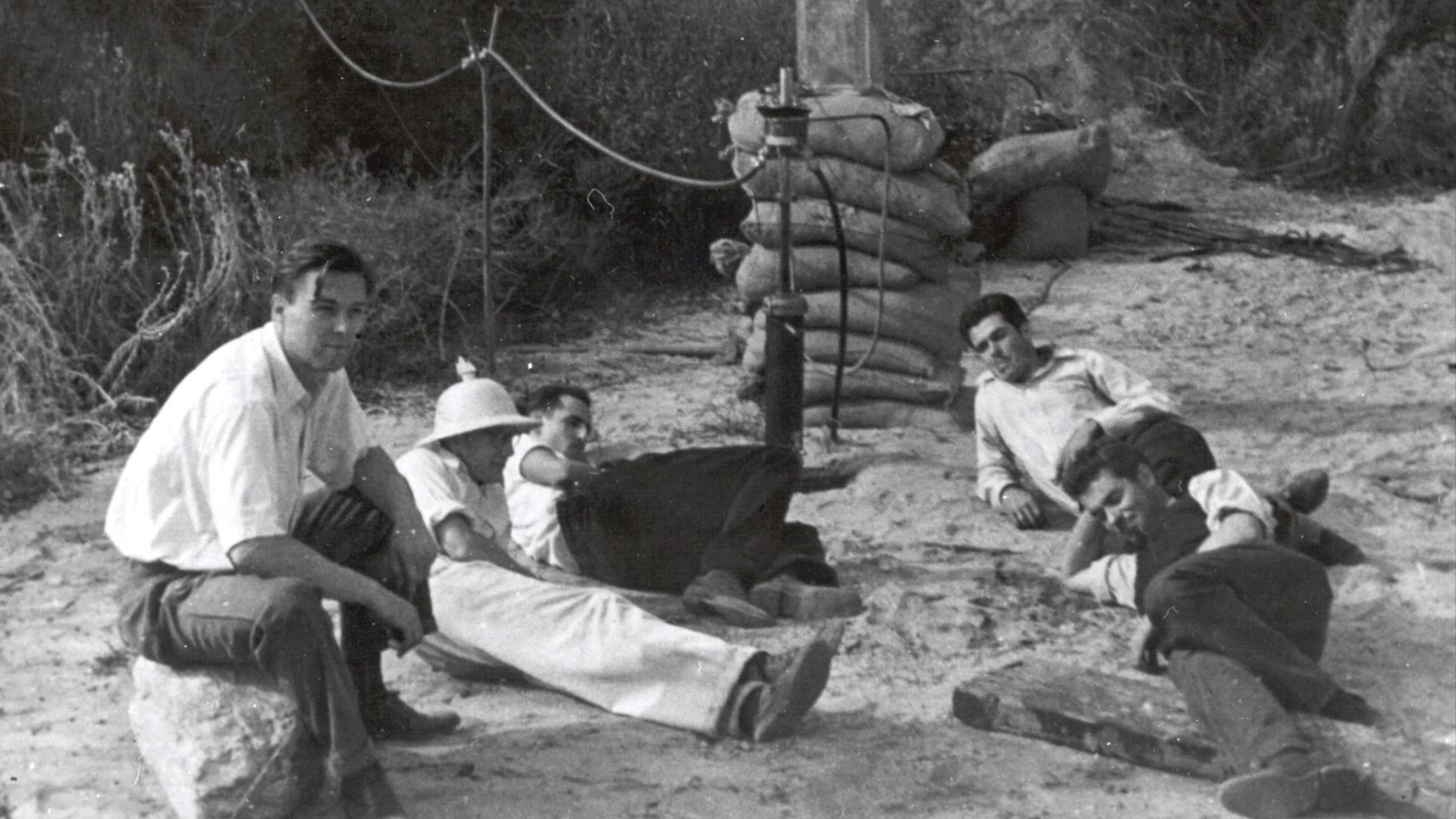
Operation Babalon
In the aftermath of the war, a character destined to disrupt Jack Parsons' life settled at Parsonage. His name was L. Ron Hubbard, at the time it was not yet the controversial founder of scientology but "only" an acclaimed short story writer for pulp magazines. Hubbard was known for his skill as a storyteller that he did not use only in print, in fact during the common meals at the Parsonage, he entertained the diners with very fictional if not completely invented tales of his war exploits and his explorations around the world. Parsons was fascinated by the newcomer and saw him as a valuable helper in his magical quest. In a letter to Crowley he writes:
"About three months ago I met Captain L. Ron Hubbard, a writer and explorer [...] Despite having no formal training in magic he has an extraordinary amount of experience and understanding of the field ... he is the most thelemic person I have ever known. and he is in perfect accord with our principles ”.
By that time, Parsons had long since begun experimenting with drugs and practicing darker and more perverse forms of magic in his attempt to make contact with supernatural entities. Crowley did not share these new interests of his disciple and warned him of the dangers and deceptions of "black magic". As early as 1943 Crowley wrote to Parsons: "I don't like what you say about witchcraft. All black magic is 75% nonsense and the rest pure garbage. There is no use in it ”. Parsons replied, however, that he was "sickened by the Christian and Theosophical foolishness about 'good and just' ".
In the memories of the tenants of the Parsonage it emerges how it had fallen a gloomy and distressing atmosphere on the villa in that time; the tenants continually performed purification rituals to protect themselves; Ed Forman, who after having joined Parsons in the Suicide Squad now joined him in his occult experiments, he will even tell of an encounter with ghostly entities that will mark him throughout his life. Whether it was a form of collective hysteria or a side effect of Parsons' rites, these phenomena were just the preamble to what would happen soon.
In January 1946, Parsons writes, "I decided to carry out a magical operation designed to get the help of an elemental companion ". Parsons enlisted the help of Hubbard, in the role of scribe, to enact a long ritual that drew from the Enochian Magic, the magical system conceived by Queen Elizabeth's astrologer John Dee. Although Hubbard was assigned the task of transcribing any supernatural communications, he soon began to behave like a medium of sorts, frequently falling into a trance. In those days of feverish work Parsons wrote down in great detail all the complex passages of the ritual in a diary. The January 18, after two weeks of continuous work Parsons and Hubbard headed for the Mojave Desert, there Parsons had a sudden epiphany:
"I turned to him and said: it's done. I felt the absolute certainty that the operation had been completed. I went home, and there I found a young woman who matched the parameters. She was waiting for me. "
The woman was called Marjorie Cameron, a young artist whose arrival at the Parsonage coincided with the return of Parsons and Hubbard. Marjorie became Parsons' partner (and later his second wife) for the magical operation he was preparing. Known as "Operation Babalon" (Babalon Working), his purpose was to embody the female deity Babalon in a little girl. Parsons writes that the choice to undertake this unprecedented magical operation is due to the fact that:
"The present age is under the influence of a force called, in magical terminology, Horus. It is connected to fire, Mars and the Sun, that is, to power, violence and energy. It is also conceptually linked to the child and his innocence (ergo: undifferentiation). Its manifestations can be seen in the destruction of old ideas and institutions, in the discovery and liberation of new energies, as well as the trend towards the establishment of brutal governments, war, homosexuality, infantilism and schizophrenia. This force is completely blind: it depends on the men and women in whom it manifests itself and who guide it. As is clear, they have so far guided it towards catastrophe."
The successful outcome of the operation can save humanity from this fate because:
"This impasse is broken by the incarnation of a force of a different kind, called BABALON. The nature of this force is related to Dionysian love, understanding and freedom, and is necessary to counterbalance or match the manifestation of Horus. "
The creation of this "magical son" (or as Crowley would have called him, a moonchild, a child of the Moon) it had to take place through another long and complex ritual that included acts of sexual magic. At the height of the operation, during another stay in the Mojave Desert, Parsons heard a disembodied voice dictating a text called Free 49 which contained the last parts of the ritual.
Having performed the last rites, Parsons considered, after two whole months, the operation completed: according to his first impressions, the operation had been a success ("There are indications that this force is actually embodied in a living woman"). According to Jack, Babalon was incarnated in who knows who: from this moment he had somewhere in the world a magical daughter who would manifest herself at the right moment to open a new era.
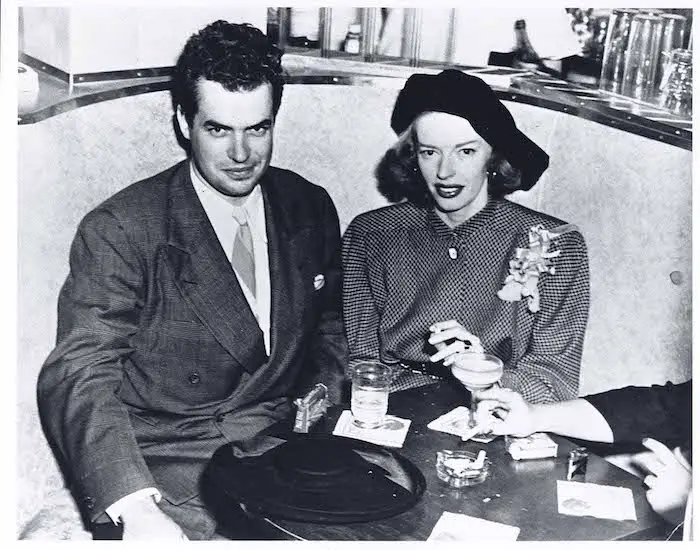
The last years
The completion of Operation Babalon acted as a caesura between two periods in Parsons' life and the beginning of what can undoubtedly be called a downward spiral. On March 16, 1946 he sent all the members of the Agape Lodge a letter in which, after exhorting the brothers in view of a global crisis on the horizon, Jack announced his intention to sell the Parsonage. Also in that period he delegated to one of his subordinates the guide of the lodge for all the time it would take him to recover from his magical enterprise.
Hubbard and Betty, who in the meantime had started a relationship, they convinced Parsons to invest almost all of his savings in a company that would buy yachts on the east coast of the USA and then resell them at a higher price on the west coast. Betty and Hubbard would be responsible for transporting the boats but Parsons soon realized that the two had escaped with his savings. The matter ended in court and Jack managed to recover only a small part of the sum invested. The betrayal of Betty and above all of Hubbard will leave an indelible mark on Parsons' soul. After this incident he resigned from the OTO. His magical search continued in solitude, focusing on the carrying out a forty-day ritual called the "Oath of the Abyss", which Parsons will later describe as "madness and horror".
In those same years the anti-communist hysteria fomented by the senator Robert McCarthy it was reaching its point of maximum intensity. Parsons too was lapped by investigations into anti-American activities, especially with regard to his acquaintances with Marxist sympathizers in the days of Caltech. This causes the temporary withdrawal of your security clearance, necessary prerequisite to work in the field of secret missile projects. Following this episode, Parsons became increasingly disillusioned with the country than him. In Parsons' eyes, the United States had betrayed the values on which it was founded and was on its way to becoming a free-killing tyranny. In the confused and fragmentary writings of this period, in which libertarian political theses, poetic lyricism and esotericism are seamlessly mixed, he sees the advent of Babalon as the only cure for the nation and the world.
Parsons felt the need to flee away from puritanical and paranoid America and so, through his old mentor Theodore Von Karaman, he began work on a feasibility study for an explosives manufacturing plant to be built in Israel. Parsons hoped to move there and perhaps have a role in Israel's missile program. His hopes were dashed when the FBI investigated him on suspicion of yielding technological secrets to a foreign nation. This investigation led to the definitive revocation of his security clearance. Cut off from high-level scientific research, Parsons moved in with his wife Marjorie Cameron and found a job at an explosives company for the film industry.
Surely an avid reader of the classics like Parsons will have read in the sequence of misfortunes that followed Operation Babalon a punishment for his hybris, but despite everything he still had the adamantine certainty that he had laid the foundations for a new era. In a short piece entitled Letter to a Daughter Parsons speaks directly to the magical child he had generated:
"My daughter, it has now been four years since I entered this hellish chapel and took part in the sacrament of your incarnation. Since then much of what was prophesied in those days has happened: I have been deprived of my wealth, honor and love: I have participated not once, but twice in my own betrayal as it was foretold. […] Although I have had some indication of your identity, they are not sure. I don't know who you are, or where you are as I write these words, nor have I ever wanted to find out. This I know: that you are embodied, that you will manifest yourself, that I must continue the work that I have been carrying out from the beginning: what it will be until we all enter the City of the Pyramids."
Parsons will never have the opportunity to meet his magical daughter: he will die in the explosion of his laboratory on June 17, 1952.
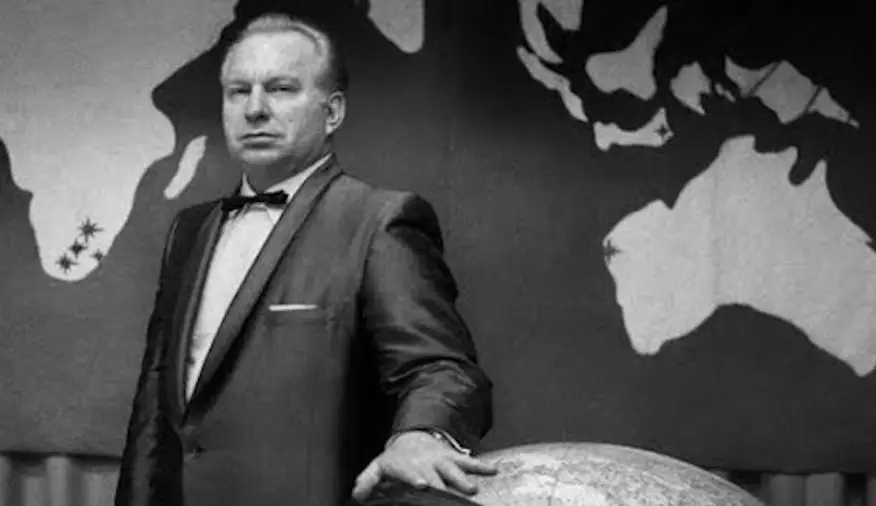
Epilogue
During his lifetime Jack Parsons truly set the stage for a new era. Thanks to his intuitions, man was able to leave the earth's atmosphere and begin the exploration of space. The Jet Propulsion Laboratory he helped found today employs more than 5,500 scientists and has an annual budget of over $ 1,4 billion. There, the lunar landers, the Voyager 1 and 2 probes, were built. A crater on the dark side of the Moon was also dedicated to Parsons. If his intent was to make man reclaim "Its ancient heritage, the stars", then Parsons did it.
And the other new era, the one that was to be heralded by Babalon? This magical operation has slipped into the realm of mythology over the decades "Alternative realities", as indeed the same figure of Jack Parsons. Some authors wanted to see in the ritual implemented by Parsons and Hubbard the real cause of the explosion of UFO sightings that began with the sighting by the aviator Kenneth Arnold in 1947. Others still they saw the "magic seed" of the hippie movement and of the protest that would explode almost twenty years later.
The most imaginative speculations abound about Parsons himself: from those who think he exploded with his laboratory while he was creating a homonculus, to those who are convinced he was murdered, passing through those who think he faked death in order to work on a secret project about time travel. With a character like Parsons, a forerunner in many ways, these flights of fantasy are almost inevitable, so give us one too: and if a young woman had traversed the history of the last seventy years, staying in the shadows but posing discreetly the basis for a new world? And if Babalon appeared, would we be sure we knew how to recognize it?
REFERENCES
- John CARTER, Sex and Rockets; The Occult World of Jack Parsons
- George PENDLE, Strange Angel: The Otherworldly Life of Rocket Scientist John Whiteside Parsons
- Jack PARSONS, Freedom
- Jack PARSONS, The Book of the Antichrist and other writings

in fact it was Von Braun who laid the foundation for space exploration. It was the German in charge of the space missions and the v2 missile was the basis for arriving at the saturn missile